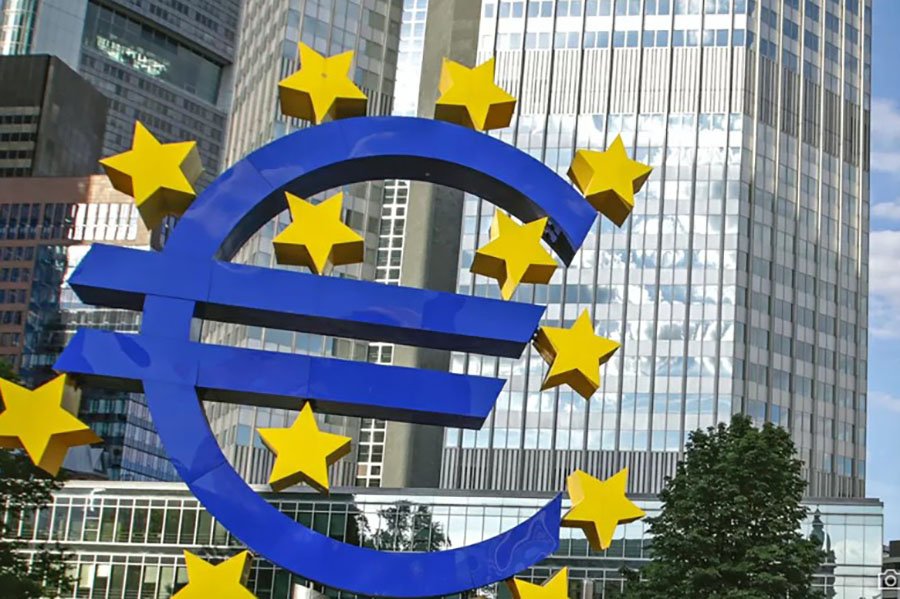читайте также
 Eurozone on Alert: ECB Flags Growing Vulnerabilities in the Financial System
Eurozone on Alert: ECB Flags Growing Vulnerabilities in the Financial System
 Hotel Investment 2025: New Opportunities for the Market — Key Insights from the Cayuga Conference
Hotel Investment 2025: New Opportunities for the Market — Key Insights from the Cayuga Conference
 Vietnam Hit by Record-Breaking Floods: Tourists Advised to Change Their Plans
Vietnam Hit by Record-Breaking Floods: Tourists Advised to Change Their Plans
 WTTC: Travel & Tourism to Create 91 Million New Jobs by 2035 — but a 43 Million Workforce Gap Looms
WTTC: Travel & Tourism to Create 91 Million New Jobs by 2035 — but a 43 Million Workforce Gap Looms
 How Children Receive Residence Permits in Europe: Full 2024 Statistics
How Children Receive Residence Permits in Europe: Full 2024 Statistics
 Cyprus to Introduce Construction Police as Oversight Tightens in 2026
Cyprus to Introduce Construction Police as Oversight Tightens in 2026
Вusiness / Real Estate / Investments / Research / Analytics / United Kingdom / Germany / France / Netherlands / Belgium 05.11.2025
European and Middle Eastern Real Estate Market Stabilizes – Colliers

The investment market of Europe, the Middle East, and Africa is beginning to recover after a prolonged downturn, reports Colliers. In the third quarter of 2025, investor confidence showed gradual improvement, with activity returning to key hubs. The market is becoming more selective, yet the demand for reliable and high-quality assets is noticeably strengthening.
Sector Overview
Offices – the first signs of recovery have appeared. Activity is concentrated in premium properties in major markets, primarily in London and Paris, where demand is supported by institutional and private investors. Prices have stabilized, and yields on prime assets are considered sustainable. Meanwhile, regional markets, including Frankfurt and Milan, continue to face pressure from declining capitalization and structural shifts. Outside the UK, improved lending conditions and the completion of the interest rate hike cycle create a foundation for more confident demand in office real estate.
Industrial and Logistics Sector – investor interest remains strong across Europe, especially in Germany, the Netherlands, and France. After a period of price adjustments, asset values have stabilized, while rental growth remains moderate. The main obstacle is a shortage of high-quality investment-grade properties. The sector continues to demonstrate resilience thanks to strong demand from tenants and global funds, keeping it among the most stable segments of the EMEA market.

Retail – retail real estate is experiencing a selective recovery. The most dynamic segments are prime shopping streets and large malls in Spain, Germany, and the UK. Rising rental rates are stimulating investor interest, especially in properties capable of flexible management and value growth. At the same time, traditional formats, particularly in peripheral markets, remain under pressure due to limited demand.
Residential – continues to hold its status as a priority investment segment. Across Europe, Build-to-Rent (rental housing) and Purpose-Built Student Accommodation (student campuses) transactions are developing actively. In continental Europe, large portfolio deals dominate, while in the UK, the focus has shifted toward redevelopment and repurposing of existing properties. In some cities, yield spreads have narrowed, indicating market strengthening.
Alternative and Emerging Segments – growing sectors include data centers, self-storage facilities, and technological infrastructure. Demand is supported by the expansion of AI and digital services, though experts warn of potential local oversupply. Capital is entering these segments mainly through direct investments, partnerships, and specialized funds rather than traditional investment instruments, reflecting a new investor strategy that is targeted and more flexible.
Key EMEA Markets
United Kingdom – investment activity in the third quarter remained about 40% below the long-term average, yet the share of foreign capital rose from 46% in 2024 to 54% year-to-date. Amid weak economic growth and uncertainty before the budget season, market participants maintained caution. The residential sector led in volume, followed by industrial and retail assets. Office properties, particularly outside central London, recovered more slowly. Investors are focused on core income-generating assets and low-risk core-plus properties with yield growth potential. The largest deal of the quarter was the acquisition of the Birmingham Retail Portfolio for £638 million, with a yield of 7.7%.

Germany – the German market is gradually emerging from a downturn. The third quarter was the most active since the start of the year, particularly in commercial real estate. The number of large deals exceeding €100 million increased notably, including transactions with offices in the country’s top seven markets. Prime income assets are returning, though liquidity remains limited. Average yields were 4.8% for offices, 4.75% for logistics, and 3.85% for residential. The largest deal of the quarter was Starwood Capital Group’s acquisition of the Helix logistics portfolio for €350 million.

France – the third quarter was relatively calm, with total investment volume reaching €2.7 billion. However, since the start of the year, the market has grown by 7%, totaling €8.67 billion. Colliers considers the annual goal of €14 billion achievable, provided several large transactions close in Q4. The most active sectors are offices, retail, and logistics. Average yields: 4% for offices, 4.75% for logistics, 3.5% for residential. The largest deal of the quarter was Gecina’s purchase of the Solstys office complex in Paris for €435 million.

Netherlands – deal volume in July–September reached about €6.2 billion, down 15% from the same period in 2024. Growth was observed in office, retail, and hotel segments, while logistics and housing were more restrained. Colliers notes that with a strong portfolio and several major projects nearing completion, the fourth quarter could become the most active of the year. The largest transaction was the sale of the 13,500 sq. m Weesperstaete office building in Amsterdam to Kozuki Holding for €95.7 million.
Belgium – became one of the growth leaders. Quarterly deal volume more than doubled from €1.93 billion to €3.99 billion, driven by portfolio operations in retail and logistics. Optimism is returning to Brussels’ office market, marked by Ampega’s first major transaction. Investors show interest in assets requiring redevelopment or active management to enhance returns (value-add). Average yields: 4.95% for offices, 4.7% for logistics. The largest deal was the sale of the Weerts Logistics Parks portfolio (225,900 sq. m) for €303 million.
Other EMEA Markets
Southern Europe shows uneven activity, but the overall trend remains positive. Spain recorded a 16% quarterly increase in deals, reaching €4.7 billion, supported by housing and hotel investments. Build-to-Rent and student housing strengthened their positions, while interest in retail assets stabilized. Italy continues to recover: over the first nine months, total investments reached €8 billion, 23% higher year-on-year. Retail and office assets dominate, and major funds are returning to deals in Milan and Rome. In Portugal, the market remains stable at around €400 million, half of which came from office projects in Lisbon.
Northern Europe shows a more balanced picture. Ireland recorded an 85% quarter-on-quarter increase in investment to €694 million, driven mainly by the residential sector. In Scandinavia, recovery is moderate: Sweden grew 63% year-on-year, led by logistics and housing segments. Denmark saw a 13% decline, though demand for residential and energy-efficient assets remains strong. Norway and Finland posted cautious growth, supported by lower interest rates and renewed interest in public infrastructure.
Central and Eastern Europe remains centered on Poland, which attracted €2.6 billion in investments during the first nine months of 2025. For the first time, over 20% of capital came from domestic investors, indicating the formation of a national investment base. The Czech Republic is completing one of its most successful years in a decade, with deal volume reaching €2.46 billion and several large transactions pending. Hungary showed the fastest growth, with investment volumes up 86% year-on-year. Romania’s market remains limited, but growth is expected by year-end due to new logistics deals.
Middle East and Africa – activity varies by country. UAE demand focuses on industrial and infrastructure assets tied to transport logistics and digital services. Israel maintains interest in residential projects and urban redevelopment, while South Africa and North Africa are showing renewed activity as currency markets stabilize.
EMEA Panorama: Trends and Context
The third quarter of 2025 became the first period in two years when the EMEA real estate market showed signs of stability. Colliers notes that yield volatility has decreased and the cost of capital has stopped rising. This allowed investors to reassess pricing levels and resume transactions. Most markets remain cautious, but overall sentiment has improved: funds and institutional players are again considering assets with predictable income and stable rental structures. Interest in large-scale transactions has revived, especially in major hubs such as London, Paris, Amsterdam, and Berlin. Secondary markets, however, continue to face liquidity shortages.
Colliers expects deal volumes to grow further toward the end of 2025 and early 2026. Vacancy rates in office and industrial properties are falling, while the residential sector maintains steady demand. With interest rates stabilizing and macroeconomic expectations improving, the EMEA market demonstrates a cautiously optimistic trajectory, laying the groundwork for moderate growth in investment activity in the coming months.





